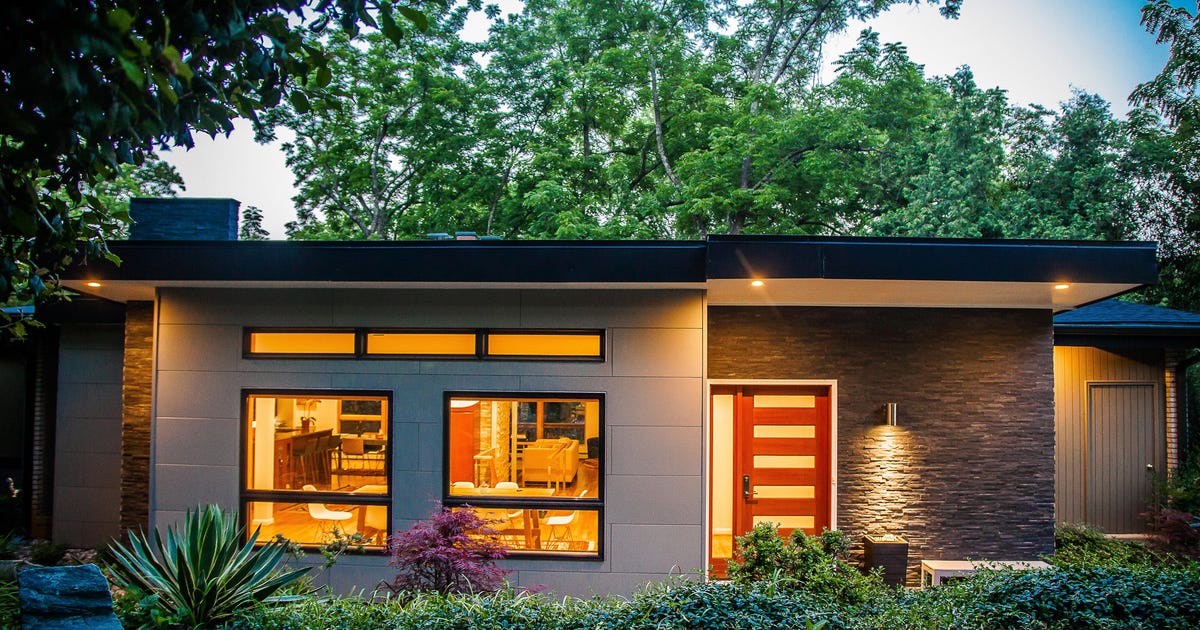
In general, refinance rates for mortgages were varied with one notable rate increasing. The average rate for a 15-year fixed refinance and a 10-year fixed refinance decreased, while 30-year fixed-rate refinances ticked up.
Though refinance rates do fluctuate slightly on a daily basis, homeowners can expect to see rates rise over the course of this year. In recent months, rates have been trending up from historic lows seen during the pandemic, and are now closer to 2018 rate levels. That means if you’re looking to shave dollars and interest off your current monthly mortgage payments, these could be the lowest rates of 2022. Make sure to think about your goals and circumstances, and compare offers to find a lender who can meet your needs.
30-year fixed-rate refinance
The current average interest rate for a 30-year refinance is 5.37%, an increase of 2 basis points over this time last week. (A basis point is equivalent to 0.01%.) A 30-year fixed refinance will typically have lower monthly payments than a 15-year or 10-year refinance. If you’re having difficulties making your monthly payments currently, a 30-year refinance could be a good option for you. Be aware, though, that interest rates will typically be higher compared to a 15-year or 10-year refinance, and you’ll pay off your loan at a slower rate.
15-year fixed-rate refinance
For 15-year fixed refinances, the average rate is currently at 4.65%, a decrease of 8 basis point from what we saw the previous week. With a 15-year fixed refinance, you’ll have a larger monthly payment than a 30-year loan. But you’ll save more money over time, because you’re paying off your loan quicker. 15-year refinance rates are typically lower than 30-year refinance rates, which will help you save even more in the long run.
10-year fixed-rate refinance
The current average interest rate for a 10-year refinance is 4.60%, a decrease of 9 basis points compared to one week ago. You’ll pay more every month with a ten-year fixed refinance compared to a 30-year or 15-year refinance — but you’ll also have a lower interest rate. A 10-year refinance can be a good deal, since paying off your house sooner will help you save on interest in the long run. But you should confirm that you can afford a higher monthly payment by evaluating your budget and overall financial situation.
Where rates are headed
At the start of the pandemic, refinance rates dropped to historic lows, but now interest rates are hovering around pre-pandemic levels. The Federal Reserve recently raised rates for the second time in 2022, and plans to increase them several more times throughout the year. Given this policy, along with strong economic growth and inflation, which reached its highest in four decades, rates are expected to keep going up this year. While there have been some temporary dips in interest rates, it’s impossible to predict when another drop might occur. That means it’s a good idea to try to take advantage of refinancing now and lock in a decent rate.
We track refinance rate trends using data collected by Bankrate, which is owned by CNET’s parent company. Here’s a table with the average refinance rates supplied by lenders nationwide:
Average refinance interest rates
| Product | Rate | Last week | Change |
|---|---|---|---|
| 30-year fixed refi | 5.37% | 5.35% | +0.02 |
| 15-year fixed refi | 4.65% | 4.73% | -0.08 |
| 10-year fixed refi | 4.60% | 4.69% | -0.09 |
Rates as of May 24, 2022.
How to shop for refinance rates
When searching for refinance rates online, it’s important to remember that your specific financial situation will influence the rate you’re offered. Though current market conditions will be a factor, your particular interest rate will depend largely on your application and credit history.
Having a high credit score, low credit utilization ratio, and a history of consistent and on-time payments will generally help you get the best interest rates. You can generally get a good feel for average interest rates online, but make sure to speak with a mortgage professional in order to see the specific rates you qualify for. And don’t forget about fees and closing costs which may cost a hefty amount upfront.
It’s also worth noting that in recent months, lenders have been stricter with their requirements. As such, you may not qualify for a refinance — or a low rate — if you don’t have a solid credit rating.
One way to get the best refinance rates is to strengthen your borrower application. If you haven’t already, try to improve your credit by monitoring your credit reports, using credit responsibly, and managing your finances carefully. Also be sure to compare offers from multiple lenders in order to get the best rate.
When should I refinance?
Most people refinance because the market interest rates are lower than their current rates or because they want to change their loan term. It’s true that in the past year, interest rates have been at a historic low. But when deciding whether to refinance, be sure to take into account other factors besides market interest rates.
A refinance may not always make financial sense. Consider your personal goals and financial circumstances. How long do you plan on staying in your home? Are you refinancing to decrease your monthly payment, pay off your house sooner — or for a combination of reasons? And don’t forget about fees and closing costs, which can add up.
Some lenders have tightened their requirements in recent months, so you may not be able to get a refinance at the posted interest rates — or even a refinance at all — if you don’t meet their standards. Refinancing at a lower interest rate can save you money in the long run and help you pay off your loan sooner. But a careful cost-benefit analysis is necessary to confirm that doing so makes sense.
